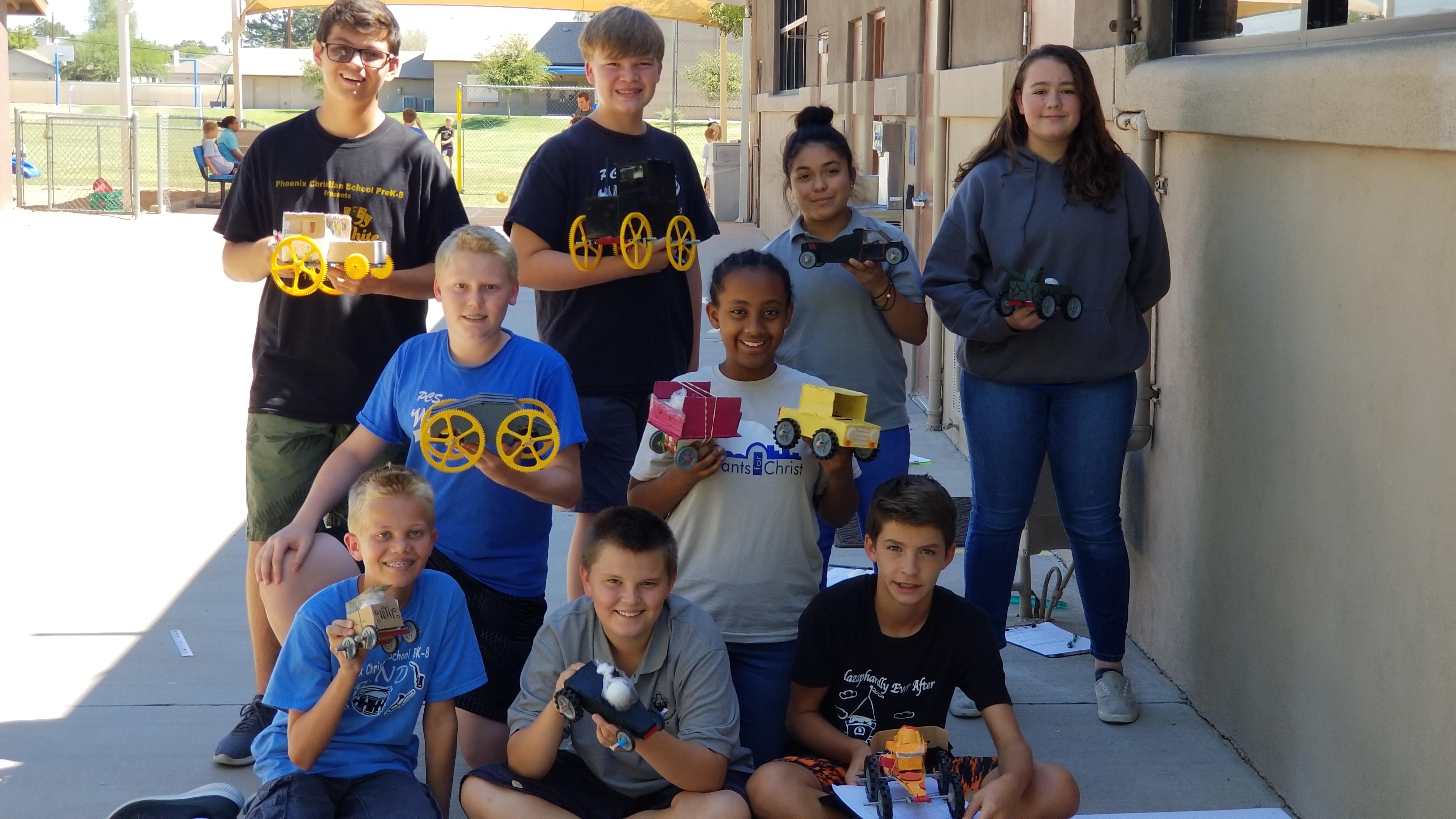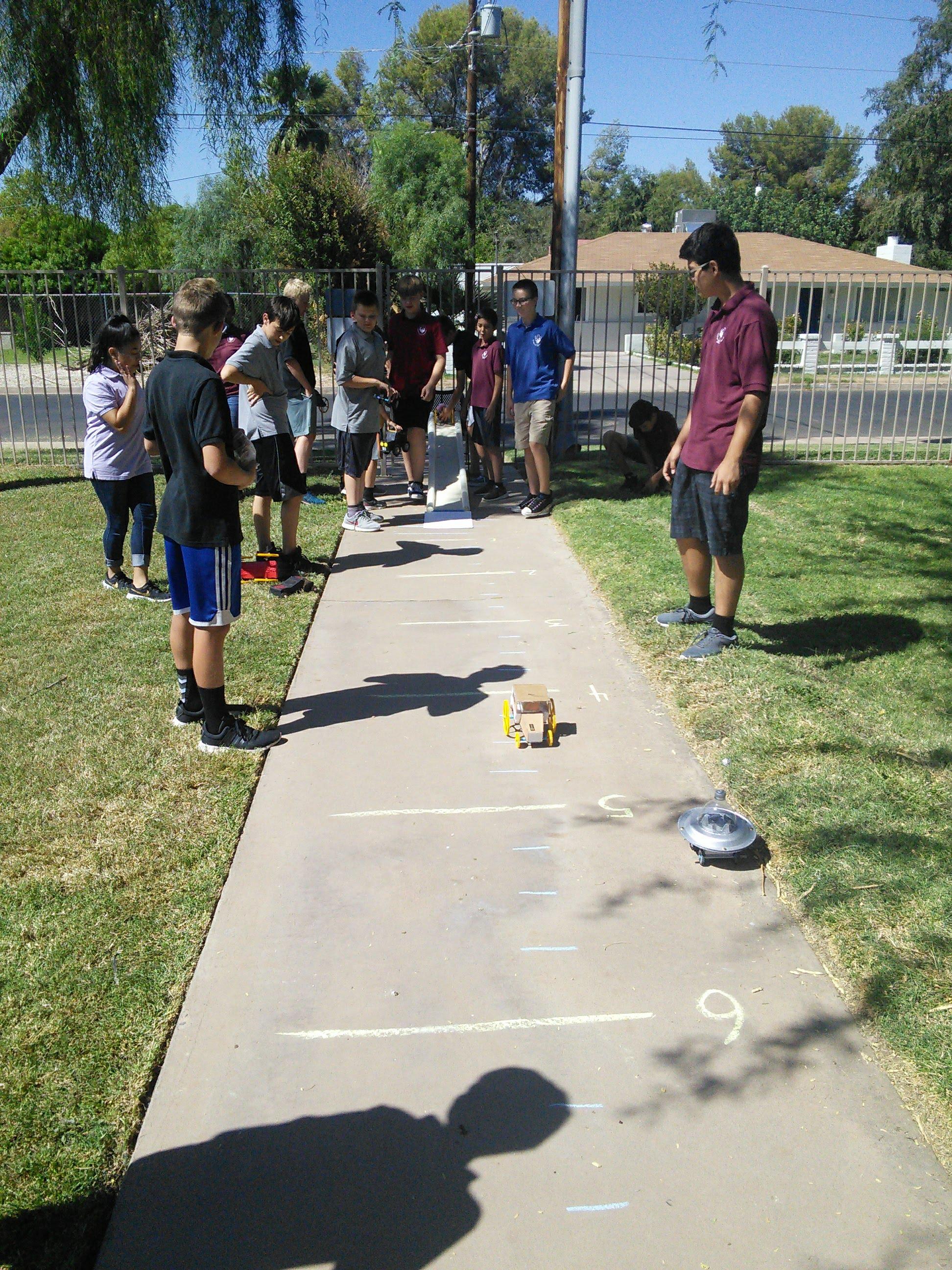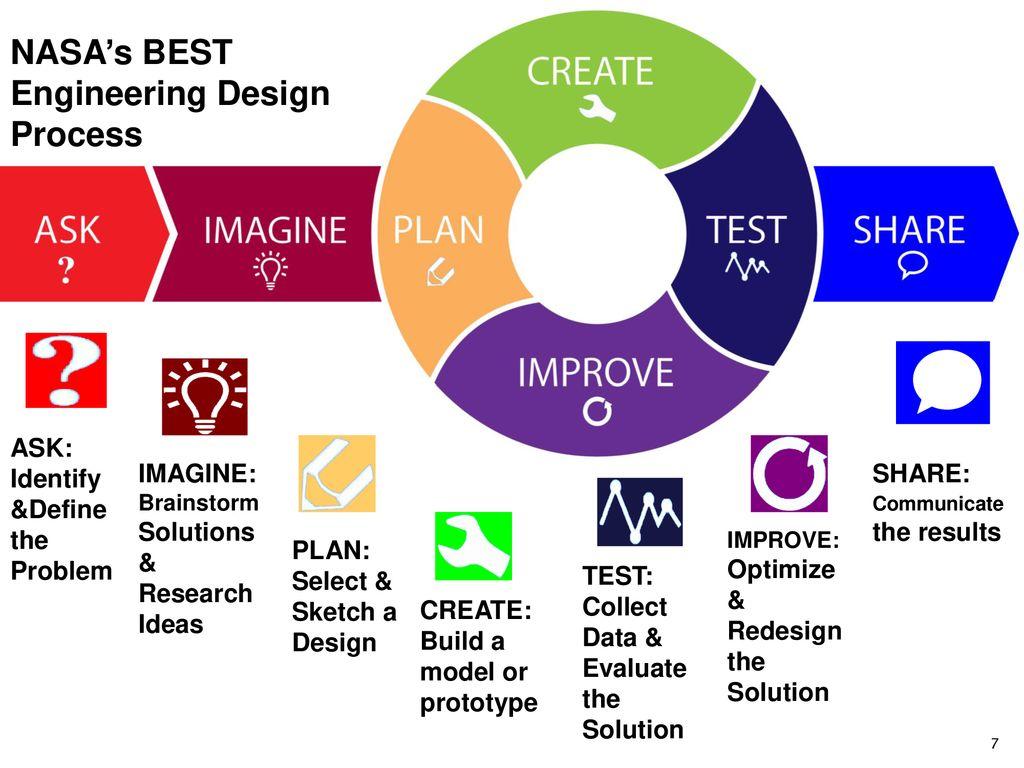God is designer and creator of all things, things in heaven and on earth. He also made humanity in his image. Our students are natural engineers. When they create, design and build to solve problems they reflect God.
One way Amanda Ervin, middle school science teacher at Phoenix Christian School PreK–8 in Phoenix, Arizona, engages her students as engineers is by posing the following problem to solve: design a vehicle that will efficiently transport one passenger, appeal to buyers, and keep a passenger safe in the event of a collision.
In addition to tapping into their God-given abilities to create, design, build, and solve problems students are also actively engaged in the engineering design process. The NGSS recommends that K–12 students explicitly learn how to engage in engineering design practices to solve problems. The Engineering Design Process promotes deeper understanding of content, encourages investigation, reflection, and keeps students engaged and involved in the learning process.
What Is the Engineering Design Process?
To solve engineering problems, engineers follow a series of steps called the Engineering Design Process. The typical steps of the engineering design process are:
Ask: What are the problems and constraints?
Imagine: What are the possible solutions?
Plan: Draw a diagram and list needed supplies.
Create: Follow your plan and test it out.
Improve: How can you modify your design to make it better?
Susan Koppendrayer, CSI STEM education specialist, met with Amanda, who is also a CSESA lead teacher, to talk about how she incorporates engineering in her middle school classroom. Susan’s questions are listed below with Amanda’s responses following.
Susan: What are the benefits of doing engineering projects in your classroom?
Amanda:
- Engineering projects motivate students. Students who struggle with communicating an understanding of a concept are provided an opportunity to excel and use their strengths.
- Students see that not all the solutions are black and white. They must not only consider the cost but also the impact on the environment the solution may have. Is there is more than one effective solution? How does the solution glorify God?
- Students benefit by learning how to collaborate and communicate effectively with each other while learning from each other.
- Students learn problem-solving skills. The engineering design process solves problems by finding answers to questions through collecting data, analyzing data, and then making modifications and adaptations.
- Students will learn to share and present their thoughts, justify answers, and then debate/defend and explain their thinking.
- During the engineering design process, students learn through trial and error, revising their ideas, testing models and updating predictions.
- Engineering projects expose our students to additional careers in science. Students get a small taste of the design process used by engineers in the field.
Susan: How do you use engineering in your classroom?
Amanda: I use engineering projects to help my students see the connection of science concepts to engineering practices. To demonstrate Newton’s Laws of motion, students design egg cars. Foil boats are designed to demonstrate buoyancy and the Archimedes Principle, Styrofoam gliders teach forces of flight and the Roller Coaster Design Challenge teaches forces, motion, and energy.
In the Christian classroom, the engineering design process allows teachers, like me, to incorporate the themes of stewardship, integrity and love of others. I have students reflect on questions similar to the following as they work through the engineering design process to solve problems:
- Is this a wise use of God’s resources?
- Are we sacrificing quality/safety to increase profits?
- How will this help meet a need of people created by God?
Susan: What suggestions do you have for incorporating the Engineering Practices in the science classroom?
Amanda:
- Is there an engineering project that connects to the content I’ve been teaching? Can it be cross-curricular and show real-world connection?
- What is your time frame? Are there limitations with scheduling or resources? What is the optimal time in curriculum map to begin the process?
- Choose a project that is motivating and students can relate to. What connections do students have to the engineering project? Does it solve something they identify as a problem?
- Why is this project important as a Christian? What implications would finding a solution have on society? How does it serve others? Would it help us live a life centered more on Christ?
- God created within us the ability to explore, innovate, and create. The Engineering Design Process creates an opportunity for students to think and act like scientists, work in teams, create a solution, and develop problem-solving skills that allow them to explore God’s creation. When I asked my eighth-grade students to tell me what they thought about our engineering projects my students said, “I enjoy engineering design challenges because I get to try my own ideas and if they don’t work, I can just try something else.” James (8th Grade) “It's fun to construct things and have hands-on things rather than just reading a textbook.” Joshua (8th Grade).
Susan: Will integrating engineering challenges in the curriculum really make a difference in our classrooms?
Amanda:
- I encourage fellow science teachers to make time to integrate engineering challenges into the curriculum if you haven’t already done so. Whether you do a spaghetti bridge, an egg drop container, a challenge to build the tallest tower from one piece of paper, an egg car, a foil boat, a roller coaster, a mousetrap car, or another of the endless possibilities, students will remember them even if they were completed in one class period. They are often the highlights for students in my science classes and students look forward to them.
Amanda: I find as they work through the problems with their designs and find solutions there are many teachable moments and students end up learning more than you planned. They may learn that the look of a design, doesn’t always reflect its ability to perform, and when looking at each other, they should look beneath the skin to see the Child of God and their unique gifts. If students leave your classroom knowing how to seek out solutions for a challenge in the classroom and come to you for advice, they are also better prepared to seek out solutions for the challenges they have in their life and look to God for wisdom. We are made in His image, and there is just as much diversity in what he created as in how we reflect his image in our engineering creations. See your students in a new light and let them see each other’s different approaches to solving a problem and you won’t be disappointed.
Engineering is a verb. It is a kinetic, collaborative, and problem-solving experience. Children learn best when they are able to ask questions, learn from one another, and integrate content in hands-on experiences. Implementing the Engineering Design Process in the Christian classroom allows students to work in teams, apply and practice deeper order thinking to meet the needs of others, form an understanding of sustainability, and implement proper use of resources to protect God’s creation while systematically discovering God’s orderly purposeful creation.

Engineering projects help students work in teams, create a solution, and develop problem-solving skills.

During engineering design challenges, students learn to collaborate and communicate.

The engineering design process is a series of steps that models how engineers approach problem solving.